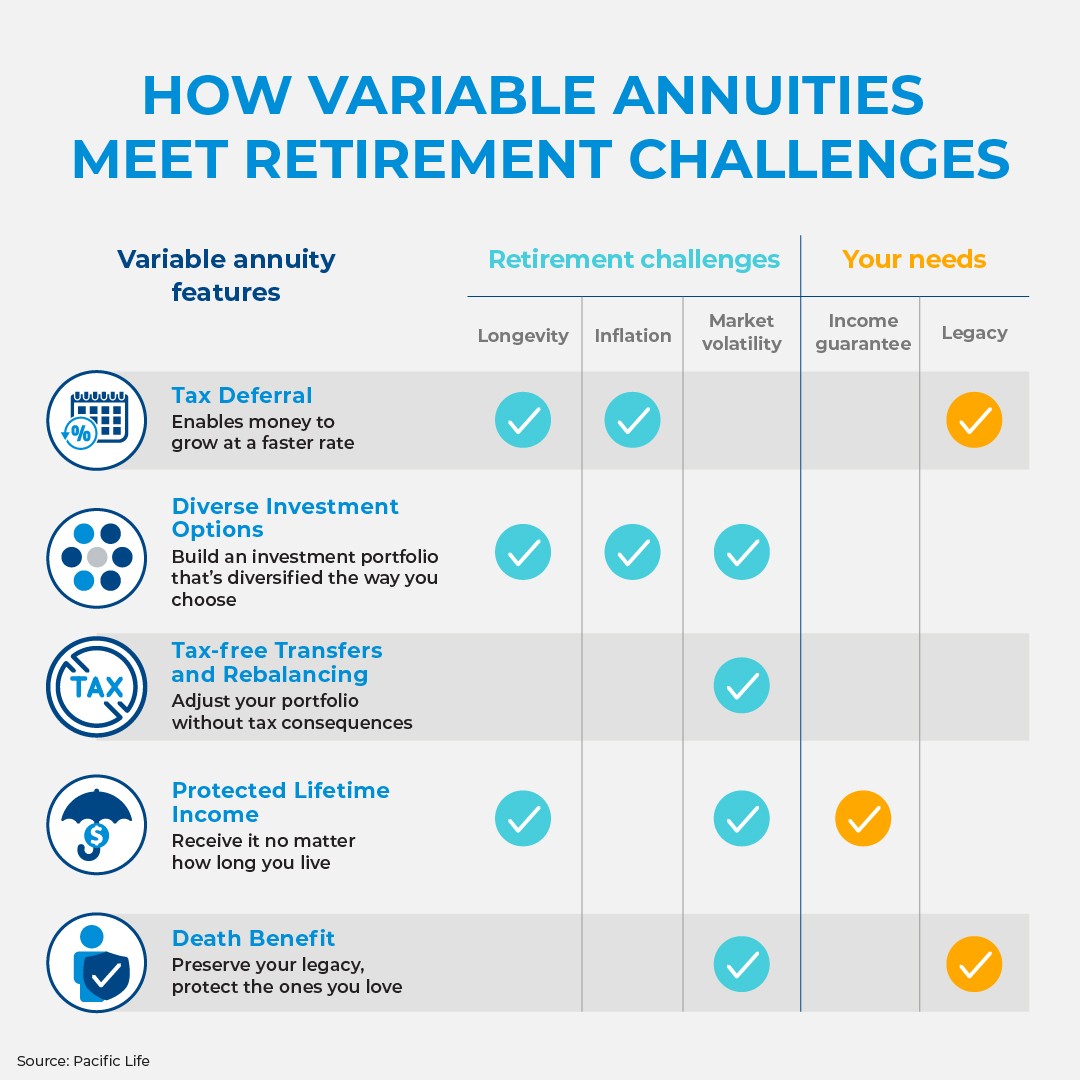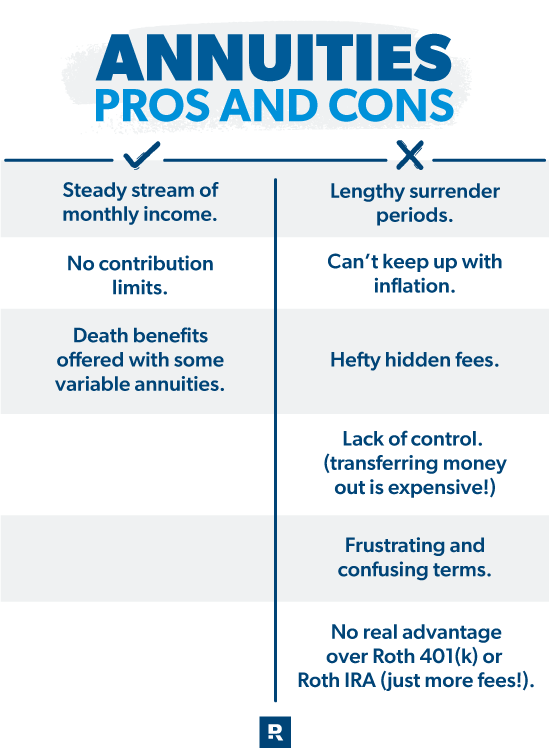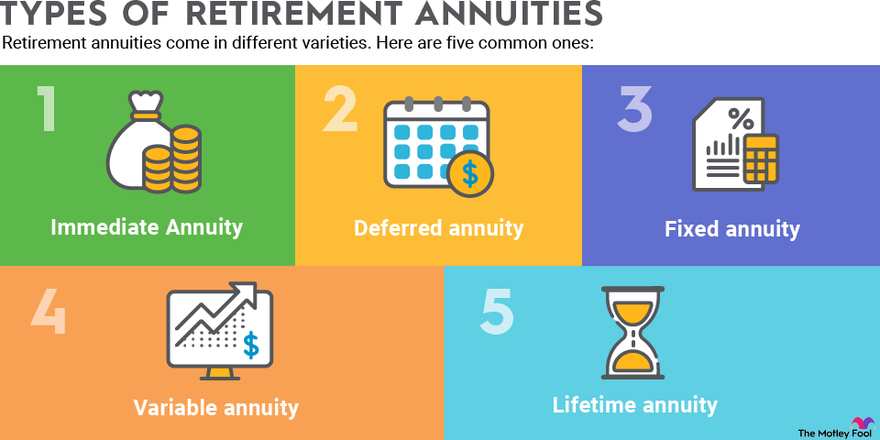All Categories
Featured
Table of Contents
Equally as with a taken care of annuity, the proprietor of a variable annuity pays an insurer a lump sum or collection of payments in exchange for the guarantee of a collection of future repayments in return. As pointed out above, while a repaired annuity grows at a guaranteed, continuous rate, a variable annuity expands at a variable price that depends upon the efficiency of the underlying investments, called sub-accounts.

During the accumulation phase, assets bought variable annuity sub-accounts grow on a tax-deferred basis and are tired just when the contract owner takes out those revenues from the account. After the buildup stage comes the income phase. Gradually, variable annuity assets must in theory increase in value up until the contract proprietor chooses she or he want to start taking out cash from the account.
The most considerable issue that variable annuities typically present is high price. Variable annuities have numerous layers of charges and costs that can, in accumulation, produce a drag of as much as 3-4% of the contract's worth annually. Below are one of the most common costs connected with variable annuities. This expenditure compensates the insurance provider for the risk that it thinks under the terms of the contract.
Highlighting the Key Features of Long-Term Investments A Closer Look at Fixed Vs Variable Annuity What Is the Best Retirement Option? Features of Fixed Vs Variable Annuity Pros And Cons Why Choosing the Right Financial Strategy Is a Smart Choice How to Compare Different Investment Plans: How It Works Key Differences Between Different Financial Strategies Understanding the Rewards of Long-Term Investments Who Should Consider Fixed Annuity Vs Variable Annuity? Tips for Choosing the Best Investment Strategy FAQs About Planning Your Financial Future Common Mistakes to Avoid When Choosing a Financial Strategy Financial Planning Simplified: Understanding Fixed Annuity Vs Variable Annuity A Beginner’s Guide to Fixed Indexed Annuity Vs Market-variable Annuity A Closer Look at How to Build a Retirement Plan
M&E cost charges are computed as a percentage of the agreement value Annuity providers hand down recordkeeping and various other administrative expenses to the contract proprietor. This can be in the kind of a level annual fee or a percent of the agreement value. Administrative charges may be consisted of as component of the M&E threat charge or might be examined independently.
These charges can vary from 0.1% for easy funds to 1.5% or more for proactively managed funds. Annuity agreements can be personalized in a variety of means to offer the particular requirements of the contract owner. Some usual variable annuity bikers consist of assured minimal buildup advantage (GMAB), assured minimum withdrawal benefit (GMWB), and assured minimum earnings benefit (GMIB).

Variable annuity payments offer no such tax reduction. Variable annuities often tend to be very ineffective automobiles for passing riches to the future generation since they do not enjoy a cost-basis modification when the initial contract proprietor passes away. When the proprietor of a taxable investment account passes away, the price bases of the financial investments kept in the account are adjusted to show the marketplace costs of those financial investments at the time of the owner's fatality.
Understanding Financial Strategies A Closer Look at Fixed Index Annuity Vs Variable Annuities Breaking Down the Basics of Fixed Vs Variable Annuity Pros And Cons Advantages and Disadvantages of Different Retirement Plans Why Choosing the Right Financial Strategy Is a Smart Choice Choosing Between Fixed Annuity And Variable Annuity: Explained in Detail Key Differences Between What Is A Variable Annuity Vs A Fixed Annuity Understanding the Key Features of Long-Term Investments Who Should Consider Fixed Interest Annuity Vs Variable Investment Annuity? Tips for Choosing the Best Investment Strategy FAQs About Planning Your Financial Future Common Mistakes to Avoid When Choosing a Financial Strategy Financial Planning Simplified: Understanding Annuities Variable Vs Fixed A Beginner’s Guide to Tax Benefits Of Fixed Vs Variable Annuities A Closer Look at How to Build a Retirement Plan
Consequently, beneficiaries can acquire a taxable financial investment portfolio with a "fresh start" from a tax point of view. Such is not the instance with variable annuities. Investments held within a variable annuity do not receive a cost-basis change when the initial proprietor of the annuity passes away. This indicates that any type of built up latent gains will be handed down to the annuity owner's heirs, along with the connected tax obligation burden.
One considerable concern connected to variable annuities is the capacity for disputes of passion that might exist on the component of annuity salesmen. Unlike a financial expert, that has a fiduciary obligation to make financial investment decisions that profit the customer, an insurance broker has no such fiduciary responsibility. Annuity sales are extremely financially rewarding for the insurance coverage professionals that market them due to high upfront sales payments.

Numerous variable annuity contracts contain language which puts a cap on the portion of gain that can be experienced by particular sub-accounts. These caps prevent the annuity owner from fully taking part in a portion of gains that might otherwise be appreciated in years in which markets generate considerable returns. From an outsider's point of view, presumably that investors are trading a cap on investment returns for the aforementioned assured floor on investment returns.
As kept in mind over, surrender fees can significantly restrict an annuity owner's ability to relocate properties out of an annuity in the very early years of the agreement. Even more, while the majority of variable annuities permit agreement proprietors to withdraw a specified amount during the buildup phase, withdrawals yet quantity normally lead to a company-imposed charge.
Withdrawals made from a set rates of interest financial investment choice can also experience a "market worth adjustment" or MVA. An MVA readjusts the value of the withdrawal to show any kind of changes in rate of interest prices from the time that the cash was invested in the fixed-rate alternative to the time that it was taken out.

Frequently, also the salespeople that sell them do not completely understand how they work, therefore salesmen often prey on a buyer's emotions to offer variable annuities instead than the values and suitability of the products themselves. Our company believe that investors ought to completely recognize what they have and just how much they are paying to own it.
Analyzing What Is A Variable Annuity Vs A Fixed Annuity Everything You Need to Know About Deferred Annuity Vs Variable Annuity Defining Fixed Vs Variable Annuity Benefits of Choosing the Right Financial Plan Why Choosing the Right Financial Strategy Can Impact Your Future How to Compare Different Investment Plans: A Complete Overview Key Differences Between Fixed Annuity Vs Equity-linked Variable Annuity Understanding the Key Features of Long-Term Investments Who Should Consider Indexed Annuity Vs Fixed Annuity? Tips for Choosing the Best Investment Strategy FAQs About Planning Your Financial Future Common Mistakes to Avoid When Choosing a Financial Strategy Financial Planning Simplified: Understanding Your Options A Beginner’s Guide to Smart Investment Decisions A Closer Look at Variable Vs Fixed Annuity
Nonetheless, the exact same can not be claimed for variable annuity possessions held in fixed-rate financial investments. These possessions legitimately belong to the insurance coverage firm and would as a result go to danger if the business were to stop working. Any warranties that the insurance company has actually agreed to provide, such as a guaranteed minimum revenue benefit, would be in question in the event of a company failure.
Possible purchasers of variable annuities need to comprehend and take into consideration the economic problem of the releasing insurance policy company prior to getting in into an annuity agreement. While the advantages and drawbacks of different kinds of annuities can be debated, the real concern bordering annuities is that of suitability. Place just, the question is: who should possess a variable annuity? This concern can be challenging to answer, provided the myriad variations readily available in the variable annuity cosmos, but there are some basic guidelines that can help financiers choose whether annuities ought to contribute in their economic strategies.
Besides, as the stating goes: "Buyer beware!" This post is prepared by Pekin Hardy Strauss, Inc. Variable annuity risks. ("Pekin Hardy," dba Pekin Hardy Strauss Wealth Management) for informational purposes only and is not meant as an offer or solicitation for organization. The details and information in this write-up does not make up legal, tax, audit, financial investment, or various other specialist recommendations
Table of Contents
Latest Posts
Exploring the Basics of Retirement Options Key Insights on Variable Vs Fixed Annuities What Is the Best Retirement Option? Pros and Cons of Various Financial Options Why Choosing the Right Financial S
Decoding How Investment Plans Work A Closer Look at Choosing Between Fixed Annuity And Variable Annuity Breaking Down the Basics of What Is A Variable Annuity Vs A Fixed Annuity Features of Fixed Vs V
Explain How An Annuity Works
More